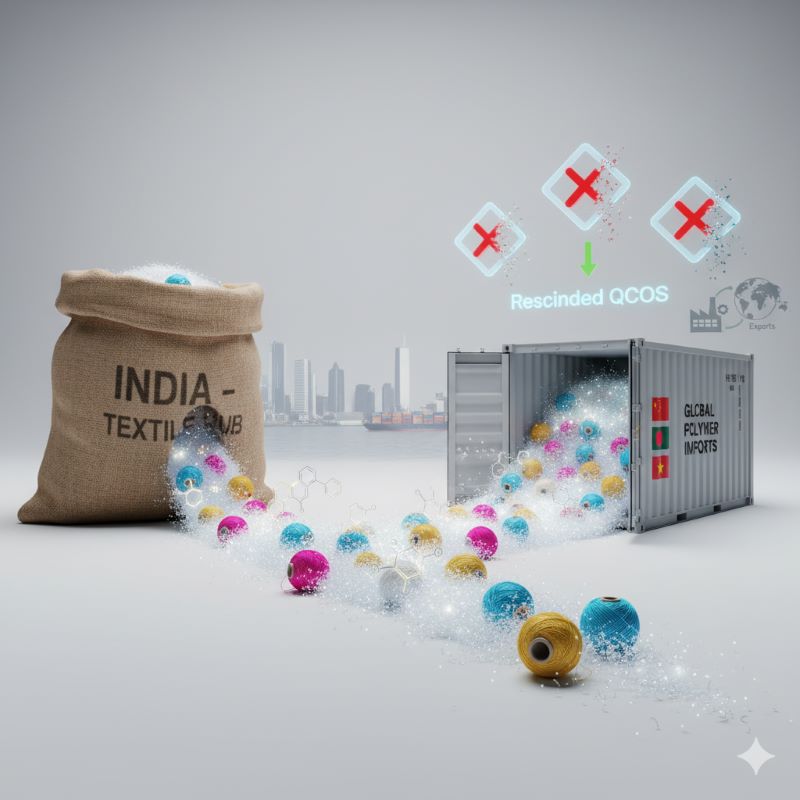
Mills in Surat reported a substantial drop in business around Diwali 2022. The estimated decline compared to the same festive season of 2021 was 60 per cent, a near death-knell for the synthetic textile sector in Gujarat’s second largest city. What are the main reasons for this sharp decline in an otherwise buoyant economy? The South Gujarat Textile Processing Association points out three key factors: GST, high inflation and sharp increase in prices of raw material.
Known as India’s synthetic textile capital, Surat used to supply 90 per cent of synthetic material produced by India annually. The President of the South Gujarat Textile Processing Association disclosed production per day is 250,000,00 meters a day whilst a year ago the figure was 450,000,00 per day. This situation has had a large impact nationally as over 100,000 migrant workers from the northern states of Bihar and Uttar Pradesh were rendered jobless and forced to return to their home states.
The issue of GST
A controversial subject, GST, according to the sector’s experts has been identified as a problem that has contributed to the sharp decline in business. The GST’s inherent structuring and stringent compliance has unsettled a vast number of mills as prior to the implementation of GST, they were conducting business in a more informal way. As traders are required to pay taxes and keep track of them at every stage, the Surat hub was ill-prepared to become a part of the Indian government’s bid to formalize its economy. This in turn had traders in a situation wherein they were unable to submit returns on time or just not be able to pay on time.
The Surat hub has a two value-chain functioning and in it, the first value chain is comprised of huge number of small-scale garment manufacturing factories of which many actually knit, print and embroider as well. Then there are others that not only produce yarn but also transform the yarn into textiles. With about 70,000 textile traders in this mix, the formalized GST system created chaos as small companies that didn’t play with a formal system ran into unknown grounds and were at a loss.
Rising cost of raw material and operations
Synthetic textile manufacturers have witnessed raw materials getting costlier by two to five percent over the past months due to a sharp increase in crude oil prices. A further increase in prices of raw materials in the short term is also on the cards. Due to an increase in crude oil prices, polyester staple fibre prices have risen by 10 percent over the past two months to S 1 per kilo. Purified terephthalic acid (PTA) is a crude oil derivative and an input for polyester fibre has increased by 4.5 percent in November 2022 and three months later shows no signs of contraction.
MEG (mono-ethylene glycol) has also become costlier by 2.8 per cent in November 2022, priced at $ 9 a kilo. China, a large producer for recycled polyester staple fibre produced from PET (polyethylene terephthalate) bottles, has stopped procurement of such bottles, resulting in a shortage of raw material for their fibre manufacturing plants. Hence, prices of recycled polyester staple fibre have gone up.
Operational cost from high-inflation is another major issue. Prices for commercial use of water have been increased in a bid for the local state government to generate more revenues to fund the state’s ambitious infrastructural projects at the cost of textile mills. Lignite coal, the staple source of energy powering these mills is another bone of contention between the state government and the mill owners as they continue urging the government to increase supply and decrease prices. Today lignite costs between $ 47 and $ 67 per ton compare to between $ 33 and $ 26 per ton.
In light of so many issues hitting all at once, synthetic textile manufacturers are not only feeling the heat but also questioning the reason to continue operation or abandon to manufacture something more lucrative.












